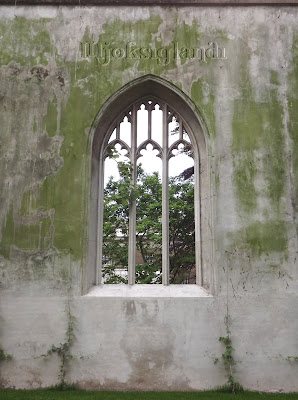After our morning session on the UCL campus on Thursday we went to the London Metropolitan Archives. Not content to be home to the National Archives, London also has its own local archives of the city's long history. There we got to see a selection of records related to burials, the commitment of lunatics to asylums, and maps of the areas most bombed during World War II.
Below are some pictures taken on the way to and from the Metropolitan Archives.
On Friday we visited the IdeaStore Whitechapel. The IdeaStore concept expands the notion of a library to include more community activities--things that many libraries offer anyway, but IdeaStores set aside spaces for them. So while story time was going on when we visited, we also passed through the cafe, and saw a presentation in the dance studio.
The Whitechapel location is not far from Brick Lane, famous for its Indian restaurants, so of course I had to have dinner there. I enjoyed the British national dish, though I didn't so much enjoy having to sit right in the front window of the restaurant; if I'm dining alone, I'd prefer to do it without so much notice being called to the fact.
As it was still early I decided to visit one of the places I'd come across in my research. I took the Tube to the Tower Hill station, and upon emerging was a little surprised to see the Tower right across the street. It was like when I was surprised that the Coliseum was directly opposite the Colosseo station in Rome; I don't know why I don't believe metro station names. There's a naval memorial on the same side of the street as the station, so I looked at that before crossing to get a better view of the Tower. Though I wouldn't have minded going in, it was a little too late in the day to try, what with the queues and all.
Instead I headed for somewhere a little off the beaten path. London has a number of public gardens and parks, and while some, like Hyde Park, are well-known, others are just small green spaces that offer much needed oxygenation and a place to sit. One of these is the garden of St Dunstan in the East.
As the name suggests, the garden has ecclesiastical connections. A church stood on the site from at least the Middle Ages; the building that was there in 1666 was damaged by the Great Fire, and Christopher Wren helped to restore it, adding a tower. During the Blitz the church was all but destroyed, though Wren's tower was later repaired. The remaining construction was made into a garden. A fountain now stands in what would have been the middle of the nave, and vines grow around empty Gothic windows. Though it's near a busy business district and is apparently a popular place for an al fresco lunch, it was quiet and serene when I visited. I wish I had been there earlier for better light for taking pictures, or had had my tripod, but it was beautiful beyond the ability of my camera and keyboard to represent.







No comments:
Post a Comment